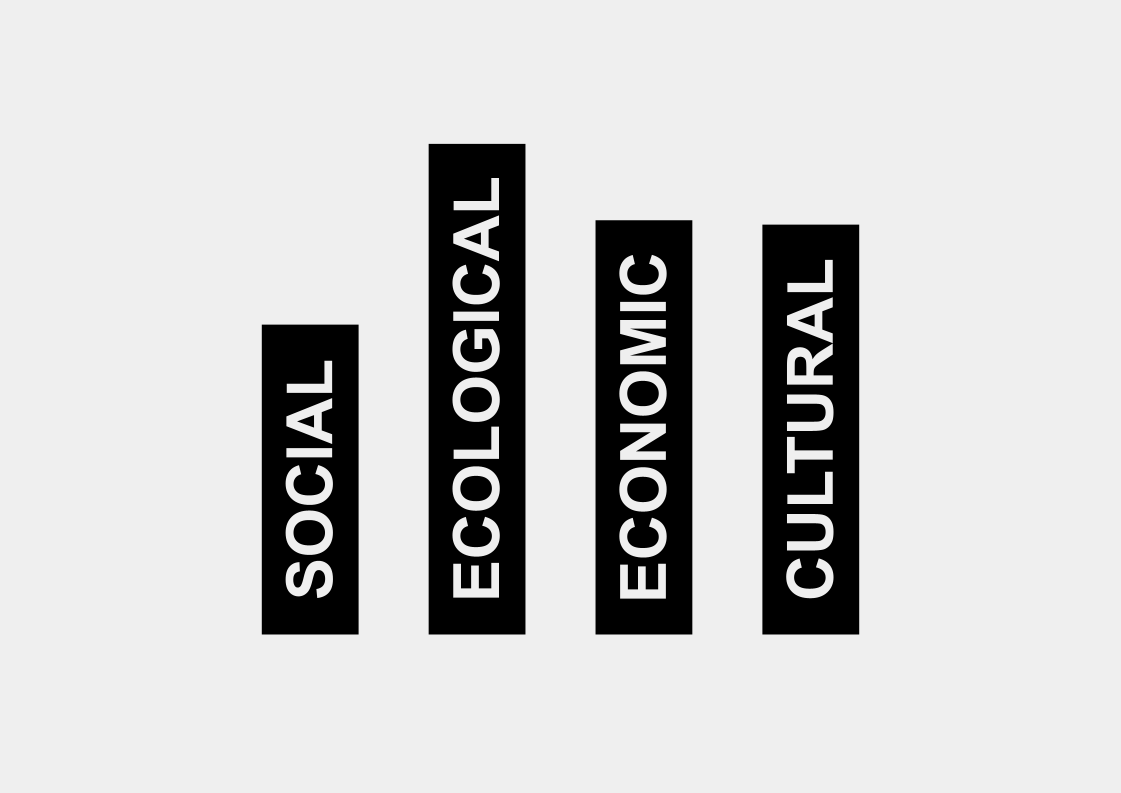4 columns of sustainability
25 January, 2023
Could the “4 columns of sustainability”, used in Vienna for decades to enable sustainable housing, be applied more broadly as a societal quality control for holistic sustainability?
During the past years I have had the chance to work with tafkaoo architects, a sustainable housing focused architectural office founded in Vienna in 2008, with offices in Berlin since 2011 and Helsinki since 2018. Together we have worked on various initiatives, concepts and projects, all with the aim of enabling sustainable housing in Finland. The first projects are successfully completed and more will follow in the coming years. tafkaoo architects originates from the city of Vienna, which is known for its high quality affordable and sustainable housing, enabled by the Vienna model of housing and its 4 columns of sustainability. Through the collaboration with tafkaoo architects, I have had the chance to learn about these concepts and implement them in my work.
There seems to be an increasing interest in holistic sustainability in various sectors. E.g. governments, cities, politicians, non-profit organizations and businesses are communicating about their commitments to holistic sustainability in various ways. Often used benchmarks are the three pillars of sustainability (social, ecological and economic) as published by the UN in Our Common Future in 1987 (also known as the Brundtland Report) and more recently the UN’s Sustainable Development Goals (also known as the 17 SDGs), under which there is a list of 169 universal sustainability targets applying to all countries around the world. I recently discussed this with a representative from the UN Association of Finland and asked why there are so many goals and targets, is it not difficult to manage and communicate the mission and most importantly reach the goals by 2030? I was told that the reason is that all UN member states had to be considered. In other words as all member states have varying goals and for them to be equally represented in the agenda, the result ended up being a long list of goals and targets without a clearly defined or easily understandable mission, other than these 17 goals and 169 targets.
While there seems to be an increasing amount of intentions and actions, as well as a collective global gravitation towards holistic sustainability, there seems to be a lack of an underlying and easily understandable framework on how to actually do it. It has also been argued that it is unviable and therefore unrealistic to reach all the 169 targets in time, and therefore we should focus on the most viable ones. Instead of having a global commitment to reach these 17 goals and 169 sustainability targets, should we rather commit to a more understandable and realistic global mission, which can be applied locally in viable ways?
From the experience of studying the Vienna model of housing, I would argue that the principles behind its 4 columns of sustainability could be used to develop a unified and realistic framework to reach global holistic sustainability. I am happy to notice that this kind of approach is gaining ground e.g. in Finnish municipalities. I’m eager to continue working with tafkaoo architects in our current and future projects as well as implementing the principles in other future initiatives. Please reach out if you wish to collaborate or discuss more.
